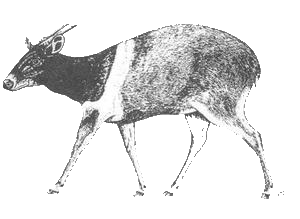3.2 Using the CITES Appendices
Using the CITES Appendices
It is important that you familiarize yourself with the CITES Appendices, the information it contains, how it is organized, and how to navigate through it.
Each species falls within one of three different Appendices' each corresponding to a different level of protection afforded to that species. Once you know under which Appendix a species is listed, you can determine which documents and/or permits are required by consulting the How CITES Regulates Trade Chart.

To see how it works, let's try searching for the following species, duiker (Cephalophus spp.).
First, you need to determine if the duiker is protected by CITES. To do this:
- refer to the CITES Appendices included in the References (see the CITES Handbook);
- do a search for the word duiker;
- check and see if it is in the Appendices.
As you can see, the word "duiker" is included in the CITES Appendices.
Now, you need to determine whether the genus Cephalophus spp. is protected and if so, what permit(s) are required.
To do this:
- Go to the CITES Appendices;
- locate the name of the species; and
- look under which column it is listed to verify the Appendix number.
You will notice that the duiker (Cephalophus spp.) is included in two Appendices: Appendix I (only the species Cephalophus jentinki) and Appendix II (there are many other species of duiker not listed in the Appendices).
You can now determine the permits required by consulting the How CITES Regulates Trade Chart. Note that, in this case, the permit requirements will depend on the country of origin of the specimen.
Using the Appendices you will find that, because of the many listing of whole families, it is not always easy to find a particular species in these Appendices. Therefore, if you can not find a species, you should also consult the Checklist of CITES Species. If you still have doubts, contact your Management Authority.
